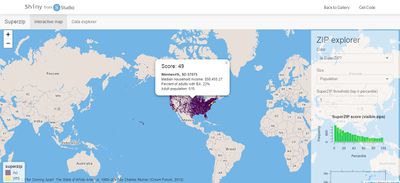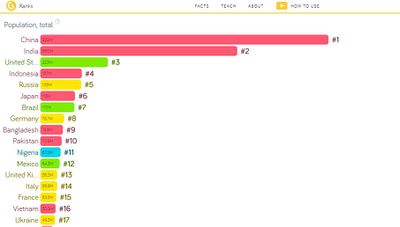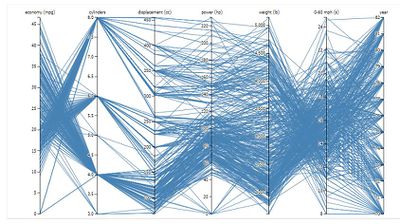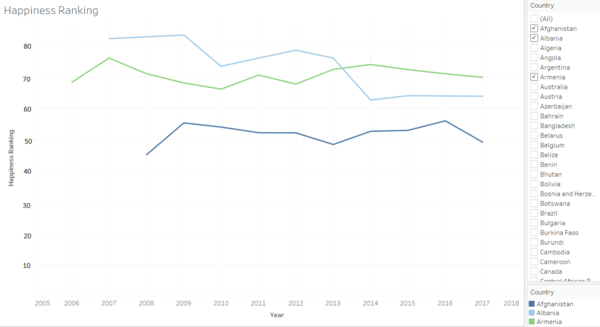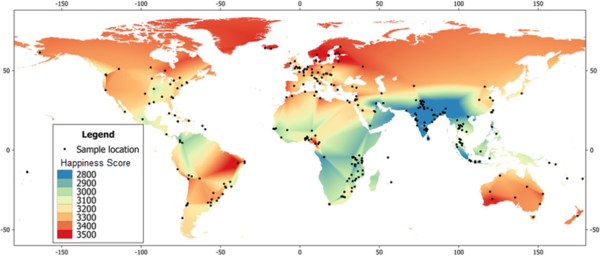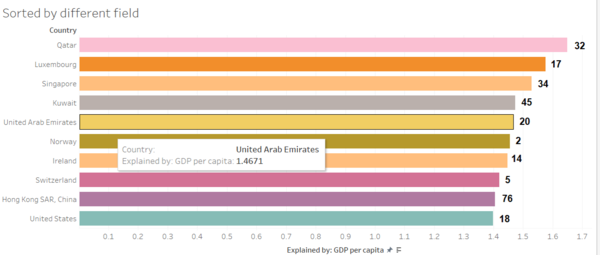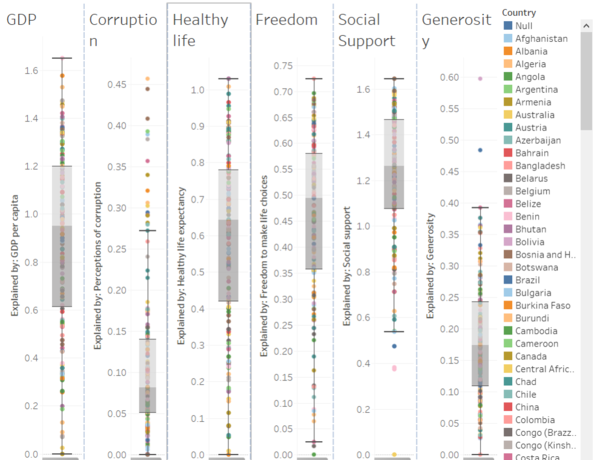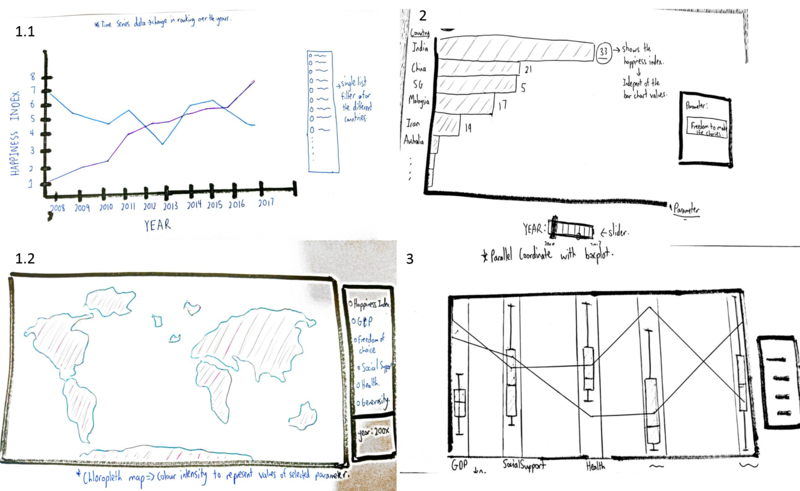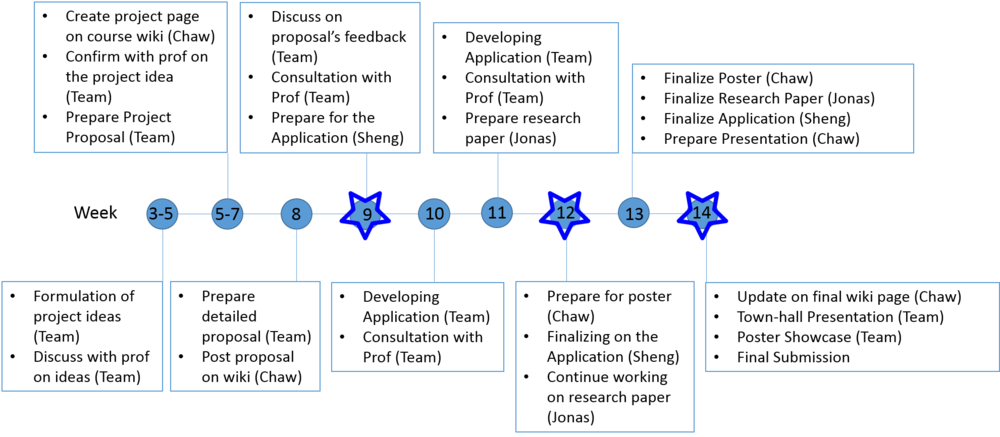Difference between revisions of "IS428 Team wiki: Group12(CJS) Proposal"
Knchaw.2015 (talk | contribs) |
Sjnevin.2015 (talk | contribs) |
||
| Line 108: | Line 108: | ||
<p><center>'''Source''': http://shiny.rstudio.com/gallery/superzip-example.html </center></p> | <p><center>'''Source''': http://shiny.rstudio.com/gallery/superzip-example.html </center></p> | ||
|| | || | ||
| − | * It will be a clear visualization to show the happiness index of the country using the world map itself. User only need to hover | + | * It will be a clear visualization to show the happiness index of the country using the world map itself. User only need to hover over the map of the country that they are interested in. |
| − | *Our team | + | *Our team aims to use a single hue of color with different intensity to show the happiness index of countries. As per the visualization, our team will also make use of the tool-tip to display 6 parameters of happiness index when the user hover over the specific country. Tentatively, hexagon map with 6 axes representing 6 parameters will also displayed. |
|- | |- | ||
| Line 117: | Line 117: | ||
|| | || | ||
* As per the visualization, the ranking of country defined by the selected parameter is to be shown with the bar chart. In our work, the parameter will be from one of the 6 parameters. | * As per the visualization, the ranking of country defined by the selected parameter is to be shown with the bar chart. In our work, the parameter will be from one of the 6 parameters. | ||
| − | * Our team aim to substitute the number beside the bar with the happiness index rating so the user can see the comparison of the | + | * Our team aim to substitute the number beside the bar with the happiness index rating so the user can see the comparison of the country's happiness index ranking and the parameter straight away. |
|- | |- | ||
| Line 125: | Line 125: | ||
|| | || | ||
*Thanks to prof guidance, parallel coordinates plot was introduced in the class. All the parameters which defined the lines are displayed concurrently in parallel coordinates. | *Thanks to prof guidance, parallel coordinates plot was introduced in the class. All the parameters which defined the lines are displayed concurrently in parallel coordinates. | ||
| − | * In our visualization, 6 parameters | + | * In our visualization, each of the axes would represent the 6 different parameters that make up the happiness index, and there will be different lines for different countries. So, the user can compare all the parameters instantly and identify relationships between them. |
|- | |- | ||
|} | |} | ||
| Line 147: | Line 147: | ||
|| | || | ||
'''Purpose:''' | '''Purpose:''' | ||
| − | To show the geographical distribution of the happiness index and the 6 | + | To show the geographical distribution of the happiness index and the 6 parameters for selected years using a chloropleth map. This helps the user identify trends between regions. For example, users could see if Asian countries are “happier” than African countries. |
<br><br>'''Features to be included:''' | <br><br>'''Features to be included:''' | ||
* Different colour intensity would be used to represent the varying values of each factors. | * Different colour intensity would be used to represent the varying values of each factors. | ||
| Line 156: | Line 156: | ||
|| | || | ||
'''Purpose:''' | '''Purpose:''' | ||
| − | To identify any correlation between the 6 sub-factors and the happiness index. Users can see, for example, what the happiness index are for countries with just the highest GDP | + | To identify any correlation between the 6 sub-factors and the happiness index. Users can see, for example, what the happiness index rankings are for countries with just the highest GDP |
<br><br>'''Features to be included:''' | <br><br>'''Features to be included:''' | ||
| − | * The bar length would be used to visualise the magnitude of the selected | + | * The bar length would be used to visualise the magnitude of the selected parameters while the number to the side of the bar chart would refer to the happiness index rank of the country. |
* There would be a slider below the chart that would allow users to scroll through and see the bar chart visualisations for the different years. | * There would be a slider below the chart that would allow users to scroll through and see the bar chart visualisations for the different years. | ||
| − | * Filter for the 6 | + | * Filter for the 6 parameters. |
|- | |- | ||
|- | |- | ||
| Line 167: | Line 167: | ||
|| | || | ||
'''Purpose:''' | '''Purpose:''' | ||
| − | To help identify trends between the 6 | + | To help identify trends between the 6 parameters among the different countries. |
<br><br>'''Features to be included:''' | <br><br>'''Features to be included:''' | ||
* Boxplot on each of the axis to enable the user to see the distribution for each of the sub-factors. | * Boxplot on each of the axis to enable the user to see the distribution for each of the sub-factors. | ||
| Line 200: | Line 200: | ||
Please check out our visualization sketch to better understand the process. | Please check out our visualization sketch to better understand the process. | ||
[[File:CJSthinkingProcess.png|center|800px]] | [[File:CJSthinkingProcess.png|center|800px]] | ||
| − | For section 1(left side of the above image), users would be greeted with a general view of the data from 2008 to 2017 | + | For section 1(left side of the above image), users would be greeted with a general view of the data from 2008 to 2017 through the time series data and the geographical distribution visualisation. This section aims to fulfill objective 1. Users can hover over the map and see the 6 parameters that make up the happiness index of the country in the specific year. User need to select the year for Chloropleth map.<br> |
Visualization presented: | Visualization presented: | ||
# Line Graph | # Line Graph | ||
# Chloropleth map | # Chloropleth map | ||
| − | Section 2(top right of the image) presents a more drilled down view as trends specifically related to the | + | Section 2(top right of the image) presents a more drilled down view as trends specifically related to the 6 parameters that make up the final happiness index can be seen here after the user selects the parameter and year. Tentatively, user would only need to select any one of the 6 parameters and the chart will change dynamically according to the year. This section aims to fulfill objective 2.<br> |
Visualizations presented: | Visualizations presented: | ||
#Bar Chart | #Bar Chart | ||
| − | For the section 3(bottom right of the image), the | + | For the section 3(bottom right of the image), the different y-axes represent the different parameters and lines are plotted for all the different countries.This section aims to fulfill objective 3.<br> |
Visualizations presented: | Visualizations presented: | ||
# Parallel Coordinates | # Parallel Coordinates | ||
Revision as of 23:07, 14 October 2018
Problem How happy are you today? How happy were you yesterday? How about last year? Well, this may sound bizarre but did you know happiness can be measured? In fact, since 2012, the United Nations Sustainable Development Solutions Network has been publishing a world happiness report which uses 6 parameters - GDP per capita, social support, healthy life expectancy, freedom to make life choices, generosity, and perception of corruption - to come up with the happiness index for different countries yearly. As a result, we were curious as to whether there is something more the large amount of data being used in this report could tell us.
Motivation The United Nations SDSN publishes reports that present the ranking of the individual countries for the year it is published in but in it, happiness index trends of different countries over the years are not clearly presented. We can realize the importance of such trends when we take the example of Singapore. In 2018, Singapore’s was ranked 34th out of 155 countries in terms of happiness. Though this may seem somewhat high, when we compare it with their 26th ranking in 2017 will we realise that Singapore is becoming a less “happier” country. Therefore, our team would like to observe the data relatively and identify whether such trends are common for other countries as well. Secondly, we are curious to see which of the 6 factors are more closely linked to a happier countries and observe what it would take for countries to be “happier”, by UN’s standards. A country ranked first in the world happiness index might not rank first in one of the 6 factors. Thus, we would like to identify the relationship between the happiness index and the 6 different factors that contribute to it. Also, through this, our team would like to find out whether there has been any inconsistency involved in the ranking over the years and possibly, we could reveal new information in regards to the world happiness index.
1. Identify the overall trends of happiness ranking index of countries over the years between 2008 to 2017
2. Identify the rankings of the each of 6 parameters that make up the happiness index of countries from the years 2008 to 2017
3. Compare the 6 parameters between the selected countries and see how they fare in relation to their final happiness index ranking from the years 2008 to 2017
4. Identify whether there has been a change in the weightage for the individual parameters towards the final happiness index ranking from year to year. (Tentative)
| Dataset/ Source | Data Attributes | Rationale of Usage |
|---|---|---|
|
World Happiness Report Data 2006-2017 |
|
See the overall performance of each individual country changes from year 2006 onwards |
| World Happiness Report Data 2017 https://s3.amazonaws.com/happiness-report/2018/WHR2018Chapter2OnlineData.xls |
|
Show data of one particular year(2017), its overall score and thus can get how the final happiness score is calculated |
Our visualization are inspired by the following works:
| Reference Visualization Work | Our Team's Take-away |
|---|---|
| |
| |
|
| Visualization | Description |
|---|---|
|
Purpose:
A general view that presents time series data of the happiness ranking between the different countries from the year 2008 to 2017.
| |
|
Purpose:
To show the geographical distribution of the happiness index and the 6 parameters for selected years using a chloropleth map. This helps the user identify trends between regions. For example, users could see if Asian countries are “happier” than African countries.
| |
|
Purpose:
To identify any correlation between the 6 sub-factors and the happiness index. Users can see, for example, what the happiness index rankings are for countries with just the highest GDP
| |
|
Purpose:
To help identify trends between the 6 parameters among the different countries.
|
| Key Technical Challenges | Proposed Solution |
|---|---|
|
No centralized data. Data are all divided year by year. |
|
| Unfamiliar with Visualization Tools |
|
| Unfamiliar with R as a new programming language |
|
Please check out our visualization sketch to better understand the process.
For section 1(left side of the above image), users would be greeted with a general view of the data from 2008 to 2017 through the time series data and the geographical distribution visualisation. This section aims to fulfill objective 1. Users can hover over the map and see the 6 parameters that make up the happiness index of the country in the specific year. User need to select the year for Chloropleth map.
Visualization presented:
- Line Graph
- Chloropleth map
Section 2(top right of the image) presents a more drilled down view as trends specifically related to the 6 parameters that make up the final happiness index can be seen here after the user selects the parameter and year. Tentatively, user would only need to select any one of the 6 parameters and the chart will change dynamically according to the year. This section aims to fulfill objective 2.
Visualizations presented:
- Bar Chart
For the section 3(bottom right of the image), the different y-axes represent the different parameters and lines are plotted for all the different countries.This section aims to fulfill objective 3.
Visualizations presented:
- Parallel Coordinates
Milestones are indicated with the star.
- https://s3.amazonaws.com/happiness-report/2018/WHR2018Chapter2OnlineData.xls
- https://s3.amazonaws.com/happiness-report/2018/WHR2018Chapter2OnlineData.xls
- http://shiny.rstudio.com/gallery/superzip-example.html
- https://www.gapminder.org/tools/#$chart-type=barrank
- https://bl.ocks.org/jasondavies/1341281
Please provide us with any comments to improve our visualization better.

